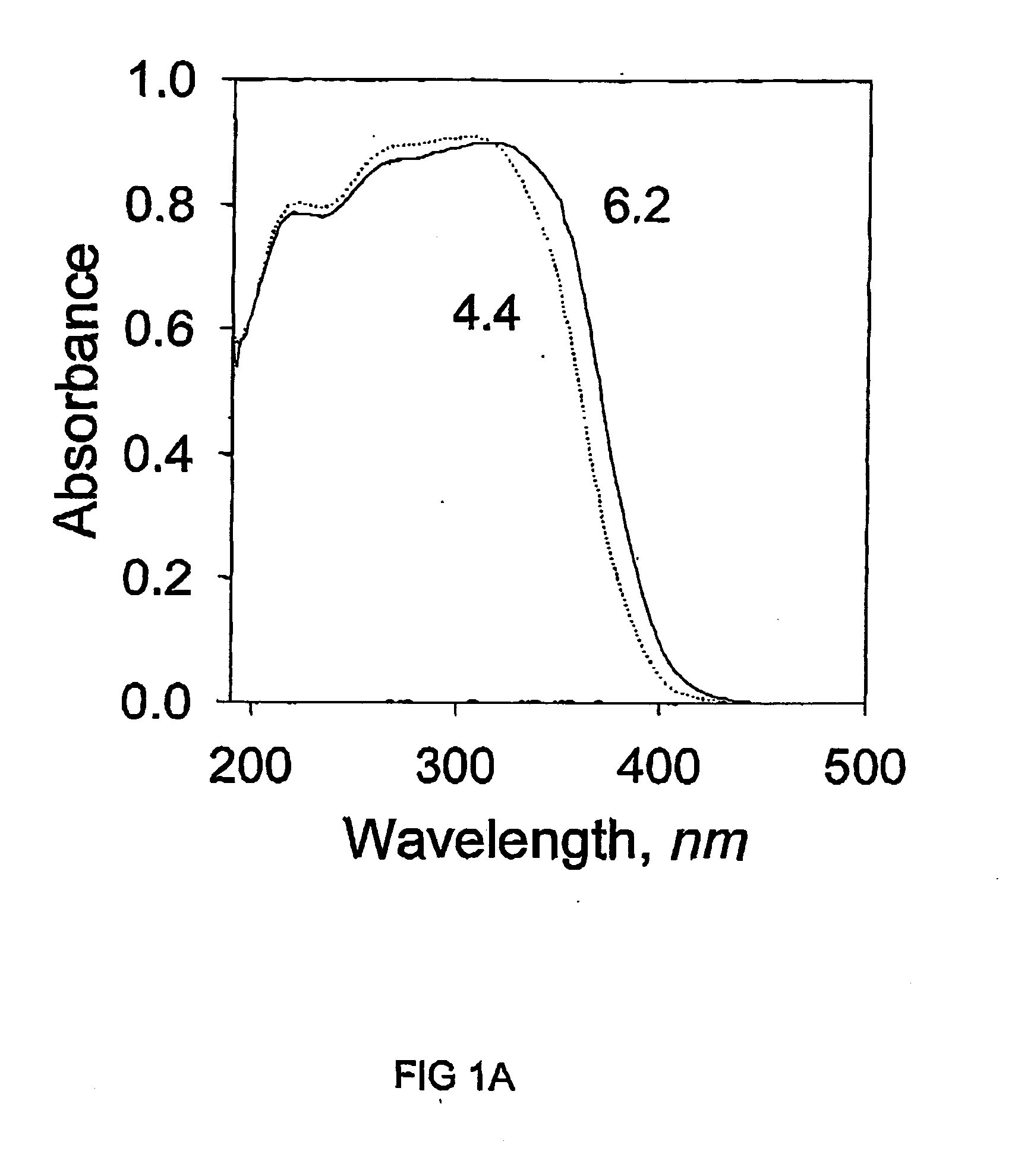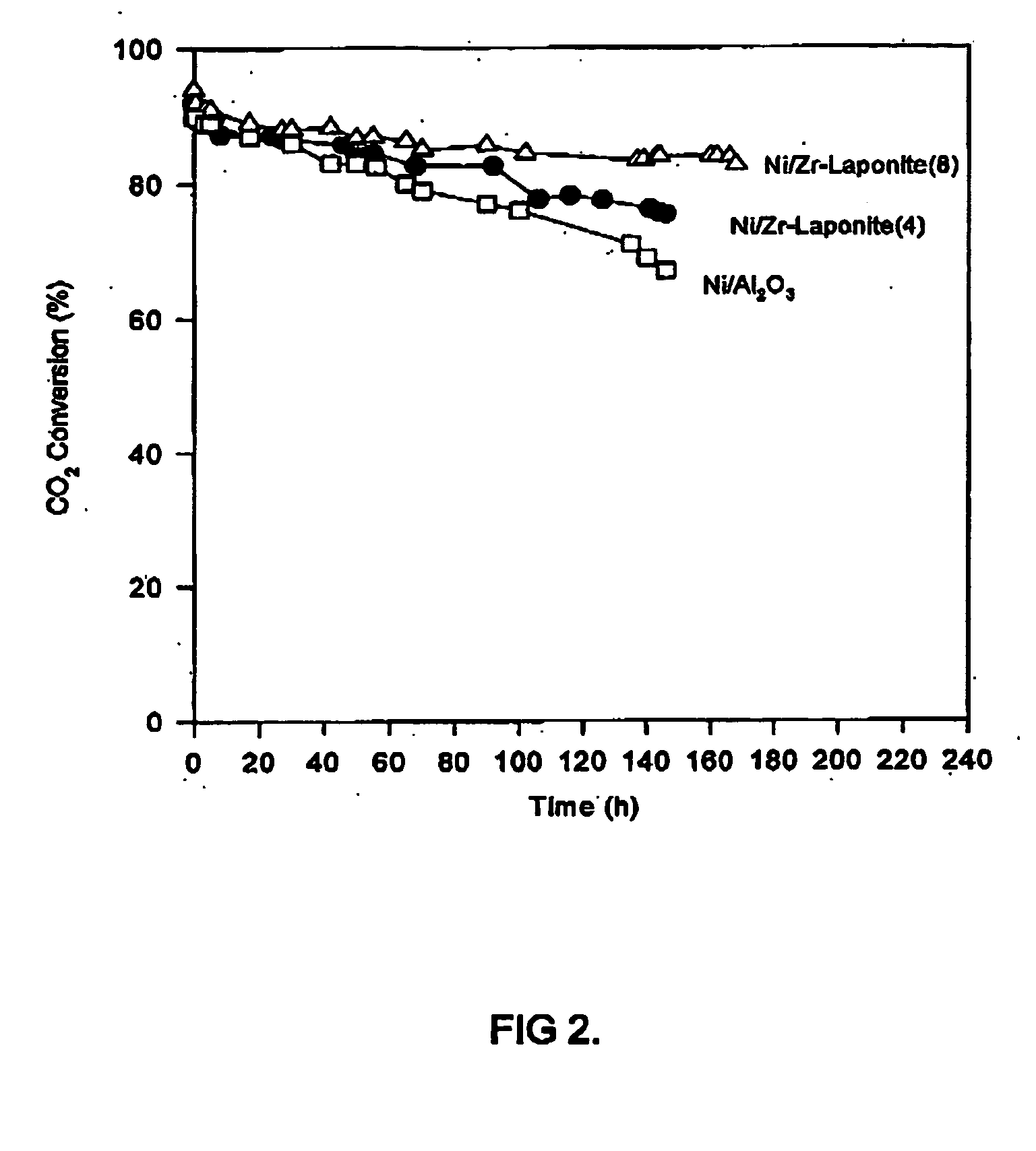Metal oxide nanoparticles in an exfoliated silicate framework
a technology of metal oxide nanoparticles and laponite, which is applied in the direction of catalyst activation/preparation, natural mineral layered products, silicates, etc., can solve the problems of affecting the general performance of products, unable to provide products with suitable pore size and surface area, and difficulty in downstream separation, etc., to achieve high porosity
- Summary
- Abstract
- Description
- Claims
- Application Information
AI Technical Summary
Benefits of technology
Problems solved by technology
Method used
Image
Examples
example 1
Alumina-Laponite
[0039] Materials: The clay was Laponite RD, supplied by Fernz Specialty Chemicals, Australia. The clay powder has a BET specific surface area of 370 m.sup.2 / g and a cation exchange capacity (CEC) of 55 mequlv / 100 g of clay.
[0040] A commercial solution of aluminum hydroxychloride (Locron L from Hoechst, Germany) was used as the alumina source. It contains polyoxycations of aluminum hydrate with an Al.sub.2O.sub.3 content of 23.5+0.5 wt &, a ratio of OH / Al of 2.5, and a pH of about 3.5-3.7.
[0041] Four nonionic PEO surfactants, Tergitol 15S-n (n=5, 7, 9, and 12) from Aldrich, were used. The PEO surfactants have general chemical formula of C.sub.12-14H.sub.25-28O(CH.sub.2CH.sub.2O).sub.nH and an average molecular weight of 420 for Tergitol 15S-5 (n=5) and of 730 for Tergitol 15S-12 (n=12).
[0042] Preparation of Alumina-Laponite Samples.
[0043] A 4.09 sample of Laponite was dispersed in 200 ml of water. The suspension was stirred until it became clear. Polyethylene oxide su...
example 2
Titanium Dioxide-Laponite
[0049] A laponite suspension was prepared as in Example 1. PEO surfactants, Tergitol 15-S-n, were added into the suspension. The amount of the surfactant was varied from 0 to 20 g, and the different surfactants (n=5, 7, 9 and 12) were used to obtain a range of samples.
[0050] The titanium hydrate sol was used as the TiO.sub.2 source. The sol was prepared from 12.9 g of titanium (IV) isopropoxide, Ti[OCH(CH.sub.3).sub.2].sub.4 and 176 ml of 1.0M HCl. It was then added dropwise into the mixture of surfactant and laponite suspension with continuous stirring. After prolonged stirring of 3 hours, the mixture was transferred into an autoclave and kept at 100.degree. C. for two days. White precipitate was recovered from the mixture by centrifuging and washing with deionised water until it was free of Cl.sup.- ions. The wet cake was dried in air and calcined at the same conditions as in Example 1.
[0051] N.sub.2 adsorption-desorption isotherms were measured in a simil...
example 3
Zirconium Dioxide-Laponite
[0058] A laponite suspension was prepared as in Example 1. PEO surfactants, Tergitol 15-S-n, were added into the suspension. The amount of the surfactant was varied from 0 to 20 g, and the different surfactants (n=5, 7, 9 and 12) were used to obtain a range of samples.
[0059] An aqueous solution of ZrOCl.sub.2, from 32.23 g of ZrOCl.sub.2.8H.sub.2O and 200 ml water, was refluxed for 1 hour and used as the ZrO.sub.2 source. It was then added drop wise into the mixture of surfactant and laponite suspension with continuous stirring. After prolonged stirring of 3 hours, the mixture was transferred into an autoclave and kept at 100.degree. C. for two days. White precipitate was recovered from the mixture by centrifuging and washing with deionised water until it was free of Cl.sup.- ions. The wet cake was dried in air and calcined at the same conditions as in Example 1.
[0060] N.sub.2 adsorption-desorption isotherms were measured in a similar manner to Example 1. T...
PUM
| Property | Measurement | Unit |
|---|---|---|
| temperatures | aaaaa | aaaaa |
| temperatures | aaaaa | aaaaa |
| temperatures | aaaaa | aaaaa |
Abstract
Description
Claims
Application Information
 Login to View More
Login to View More - R&D
- Intellectual Property
- Life Sciences
- Materials
- Tech Scout
- Unparalleled Data Quality
- Higher Quality Content
- 60% Fewer Hallucinations
Browse by: Latest US Patents, China's latest patents, Technical Efficacy Thesaurus, Application Domain, Technology Topic, Popular Technical Reports.
© 2025 PatSnap. All rights reserved.Legal|Privacy policy|Modern Slavery Act Transparency Statement|Sitemap|About US| Contact US: help@patsnap.com



